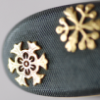-
Posts
2,959 -
Joined
-
Last visited
-
Days Won
18

Surfson replied to Kaiser21's topic in General Nihonto Related Discussion

Surfson replied to Kaiser21's topic in General Nihonto Related Discussion

Surfson replied to Kaiser21's topic in General Nihonto Related Discussion

Surfson replied to Kaiser21's topic in General Nihonto Related Discussion

Surfson replied to Foletta's topic in General Nihonto Related Discussion

Surfson replied to Foletta's topic in General Nihonto Related Discussion

Surfson replied to Kaiser21's topic in General Nihonto Related Discussion

Surfson replied to Infinite_Wisdumb's topic in Tosogu

Surfson replied to Aethel_berht 2-0's topic in General Nihonto Related Discussion

